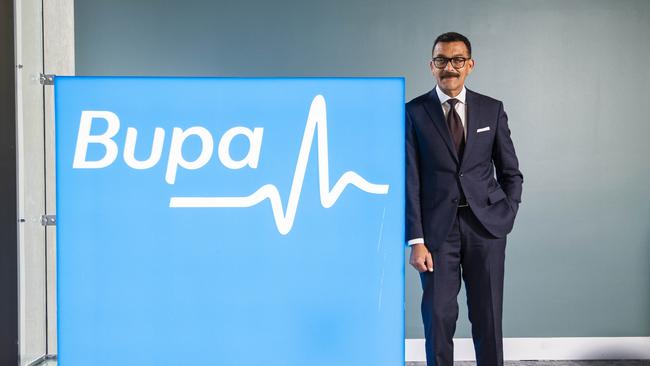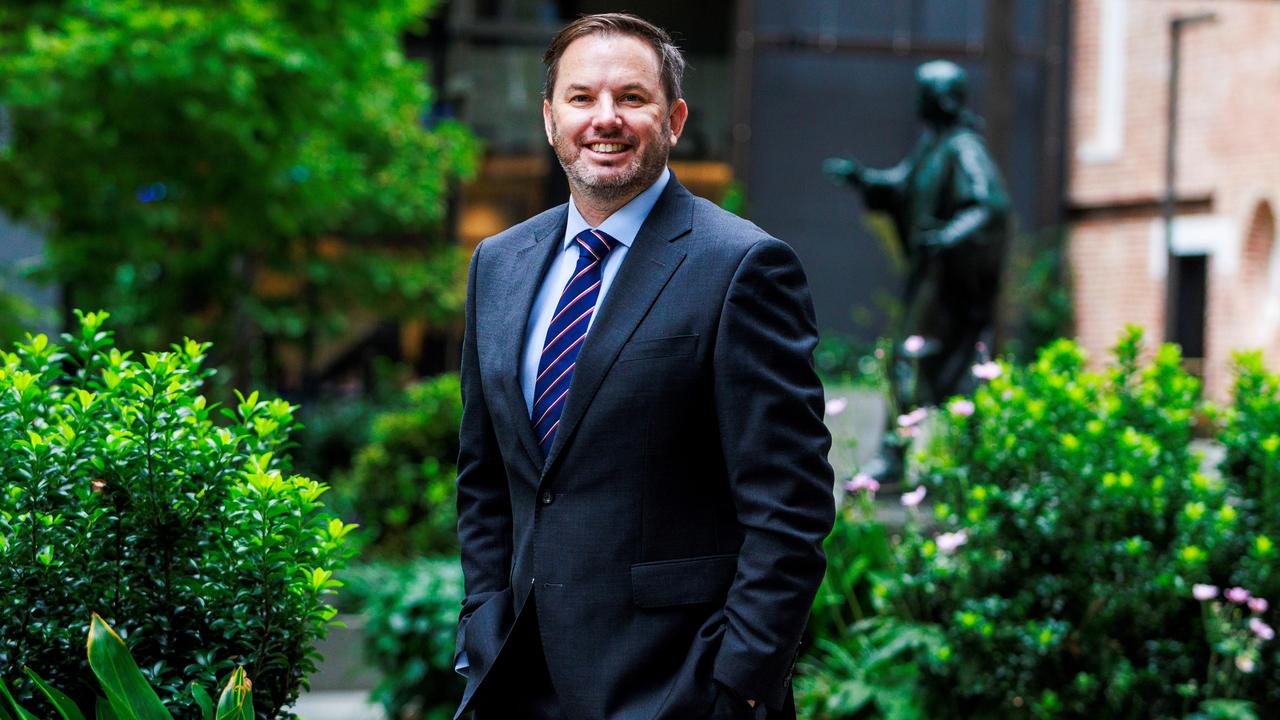‘We’re not benefiting from Covid,’ says Bupa boss Hisham El-Ansary as profit jumps 69pc
Bupa’s Asia Pacific chief executive Hisham El-Ansary says claims health insurers have profiteered from Covid are not true, despite his 69 per cent rise in annual profit.

Bupa’s Asia-Pacific chief executive, Hisham El-Ansary, has hit back at claims health insurers are profiteering from Covid-19 and accusations the sector is creeping into US-style managed care to slash costs.
Bupa’s local underlying profit soared by 69 per cent to $407m in 2021, but Mr El-Ansary said this result followed a weak performance the year before, which led to them engaging McKinsey & Company to review its business.
Its operations – which span health insurance, health services and aged care homes in Australia and New Zealand – generated $10.1bn revenue.
Some $7.1bn of this came from its health insurance division, which recorded a 79 per cent rise in profit to $449m – accounting for about a quarter of the profits that Australian health funds made last year.
Claims growth was flat at $5.9bn. Pre-pandemic, they would typically rise 3 per cent.
“On $10bn in revenue, to earn $400m is 4c in the dollar. I wouldn’t be singing from the rooftops,” said Mr El-Ansary, who joined Bupa in 2008 as its chief financial officer.
“It probably should be 6c or 7c in the dollar, in a more normal operating sense. A lot of the market chatter is health insurers have increased profit and benefited from Covid. It’s not the case.”
Bupa’s latest result comes as health funds criticise the federal government’s much-anticipated reform of the pricing of replacement hips and other body parts, saying consumers will still be out of pocket because charges in the private sector are up to 145 per cent more than in the public health system.
The profit of Australia’s entire health insurance sector more than tripled to $1.8bn last year on flat claims growth of $22.1bn, according to the Australian Prudential Regulatory Authority, as hospitals reeled from pandemic elective surgery bans.
Health insurers have been returning ‘‘pandemic savings’; in various ways, with the Australian Competition & Consumer Commission watching closely.
Bupa – a private company established in 1947 as the British United Provident Association – engaged McKinsey in early 2020 at the onset of the pandemic after it found itself “falling short” of its key competitors Medibank and NIB in terms of margin and customer growth.
McKinsey’s report included a raft of recommendations which Bupa’s management has been steadily implementing in the past 18 months.
“So there are two things that are going on in our business: one the external Covid, and the other management’s attempts at transforming the health insurance business by rationalising our products, by cutting out unnecessary costs, by focusing on improving the customer experience to improve the acquisition and retention of customers.”
Part of stripping out unnecessary costs is advocating for shorter hospital stays where clinically appropriate – a strategy Australia’s biggest health insurer, Medibank, has been a key proponent of. This has attracted criticism from doctors groups and private hospitals that it’s a step towards US-style managed care.
But Mr El-Ansary said the strategy was aimed at ensuring patients had the right treatment for their needs and adding more flexibility to Australia’s health system.
“It’s not trying to control healthcare to cut our costs. This is just such an archaic argument,” he said.
“When a person needs a knee replacement, the traditional cost is about $30,000. How’s that broken up? Well, the patient goes into hospital, the surgeon’s fees, the doctors fees are typically about $10,000. The prosthetic knee is about $10,000 and then the hospital stay is $10,000.
“They stay in hospital for a week after the surgery. The next day, assuming there’s no infection and no complications … the physiotherapist comes in for 10 minutes in the morning and walks ‘Mrs Jones’ down the corridor and back. And if she’s lucky that physio will come back in the afternoon and do the same thing. That will be about $1900 a night for the individual, eating mashed potatoes and gravy … is that a good use of the system?”
Mr El-Ansary said that providing there are no complications after surgery, a better use of funds was at-home rehabilitation, which in turn would take pressure off premiums.
“Even if you spent a couple of grand on that personalised care, the individual is more comfortable in their own home and they’re getting a much better quality of rehab. And the total cost of the procedure is reduced.
“That’s what our competitors are looking at. That’s what we’re looking at.”
Health insurers argue that they’re bringing Australia into line with overseas jurisdictions. According to OECD data and LEK Executive Insights, international best practice – referencing the US – is that 30 per cent of joint replacements are performed in short-stay hospitals, whereas in Australia it is close to zero.
Meanwhile, the same data shows 90 per cent of hernia procedures are performed in short stay hospitals – referencing The Netherlands as best international practice – but in Australia it is 24 per cent.
Mr El-Ansary said the cost of prostheses was also putting pressure on premiums, with Australians paying twice what New Zealanders paid.
“There’s something fundamentally wrong with how we’re procuring and passing on those costs of prosthetic devices,” he said.
Last week, Health Minister Greg Hunt struck a deal with medical device companies to bring down the price of prostheses by an average of 10 per cent, saving more than $900m a year or shaving $50 off a family’s average annual health insurance premium.
Like other insurers, Bupa will defer its annual 3.18 per cent premium rise for six months to October as part of a package it says will return $146m to members.
Across Bupa’s other businesses, it cut its Australian aged care division loss from $66m to $16m on flat revenue of $644m. Meanwhile its health services, which include optical and dental clinics, suffered a hit from pandemic shutdowns, with profit diving 77 per cent to $9m.
Health services revenue firmed 5 per cent to $1.12bn, which Mr El-Ansary said was mostly due to its contract with the Australian Defence Force.




To join the conversation, please log in. Don't have an account? Register
Join the conversation, you are commenting as Logout